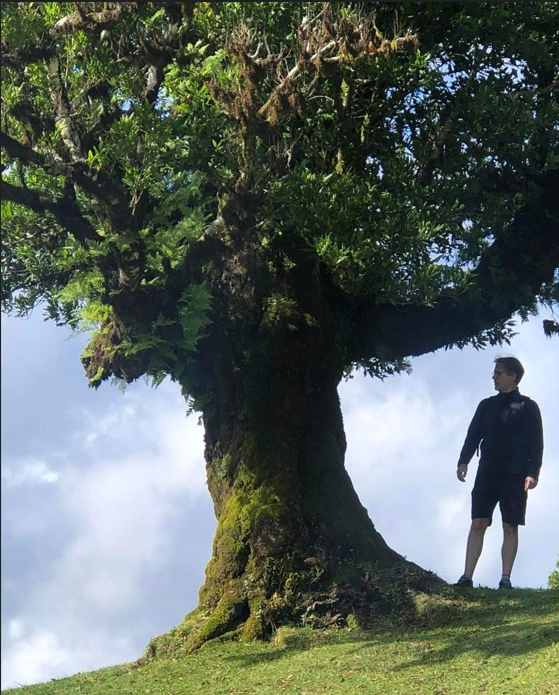- Evrópuverkefni
- Rannsóknir
- Dýrasvif
- Efnagreiningar
- Ferskvatnsfiskar
- Stangveiði
- Fiskmerkingar
- Framandi sjávarlífverur
- Hvalarannsóknir
- Kolmunni
- Kortlagning búsvæða
- Kortlagning hafsbotnsins
- Arnarfjörður
- Drekasvæði
- Hali Dohrnbanki
- Ísafjarðardjúp
- Jökulbanki
- Jökuldjúp
- Kolbeinseyjarhryggur og nágrenni
- Kolluáll
- Kötluhryggir
- Langanesgrunn
- Látragrunn
- Nesdjúp
- Reykjaneshryggur og nágrenni
- Selvogsbanki
- Suðaustan Lónsdjúps
- Suðausturmið
- Suðurdjúp
- Suðvestan Jökuldjúps
- Sunnan Selvogsbanka
- Sunnan Skeiðarárdjúps
- Sunnan Skerjadjúps
- Vesturdjúp
- Víkuráll
- Austan við Reykjaneshrygg
- Vestfjarðarmið
- Kvarnir og aldursákvörðun beinfiska
- Loðna
- Makríll
- Myndavélar við stofnmat
- Sjórannsóknir
- Steinbítur & hlýri
- Stofnmælingar
- Veiðarfærasjá
- Vöktun eiturþörunga
- Vöktun veiðiáa
- Þörungarannsóknir
- Rannsóknafréttir
- Umhverfisáhrif sjókvíaeldis
- Ráðgjöf
- Miðlun
- Ársskýrslur
- Fréttir & tilkynningar
- Fyrir skóla
- Lax- og silungsveiðin - tölur
- Málstofur
- Merki/logo
- Myndbönd
- Útgáfa
- Samfélagsmiðlar
- Öryggi & persónuvernd
- Myndasafn
- Skráning á póstlista
- Um okkur
Málstofa þriðjudaginn 22. nóvember 2022
18. nóvember 2022
Þriðjudaginn 22. nóvember kl. 12:30 verður málstofa Hafrannsóknastofnunar haldin í fundarsal á 1. hæð að Fornubúðum 5 í Hafnarfirði.
Christophe Pampoulie, rannsóknastjóri hjá Hafrannsóknastofnun flytur erindið: Can we use environmental DNA to estimate distribution and abundance of capelin? / Er hægt að nota umhverfis DNA til að meta útbreiðslu of stofnstærð loðnu?
Erindið verður flutt á ensku og streymt á YouTube síðu Hafrannsóknastofnunar.
Ágrip
Loðna (Mallotus villosus) er mikilvæg tegund bæði fyrir veiðar og vistkerfi í Norður Atlantshafi. Fyrir tveimur áratugum urðu talsverðar breytingar á loðnustofninum í kringum Ísland. Yfir fæðutíma á haustin var fiskurinn yfirleitt fyrir norðan Ísland og á svæðinu í kringum Jan Mayen. Frá upphafi nýrrar aldar hafa aðal fæðuslóðirnar hinsvegar verið austur af Grænlandsgrunni, ásamt því að breytingar hafa orðið bæði á staðsetningu og tímasetningu hrygningar meðfram landgrunni Íslands, sem hefur haft bein áhrif á veiðar. Flækjustig og kostnaður við mat á stofnstærð hefur aukist talsvert samhliða þessum breytingum á farhegðun og útbreiðslu loðnu í kringum landið.
Í þessum fyrirlestri verða bornar saman niðurstöður söfnunar á umhverfiserfðaefni (eDNA) samhliða hefðbundnum bergmálsmælingum að hausti við mat á stofnstærð. Vatnssýnum til greiningar á eDNA var safnað á mismunandi dýpi og stöðvum þannig að hægt væri að meta magn bæði lárétt, eftir lengdar- og breiddargráðum og lóðrétt eftir dýpi. Á nærri öllum stöðvum þar sem bergmálsmælingar gáfu til kynna loðnu var eDNA einnig greinanlegt. Lárétt dreifing á eDNA passaði fullkomlega við stofnmælingar sem gerðar voru 2019 og 2020 meðan að lóðrétt magnbundin greining var undir áhrifum hafstrauma.
Útbreiðslulíkön (e. occupancy models) sýna fylgni á milli eDNA og þéttleika loðnu, seltu, hita og hraða sjávarstrauma. Innleiðing eDNA mælinga við veiðistýringu verða rædd í samhengi við niðurstöður verkefnisins.
Abstract
Capelin (Mallotus villosus) is both an important commercial and ecological resource of the North Atlantic subpolar region. Two decades ago, the dynamic of the stock around Iceland dramatically changed. During the autumn, which corresponds to the main feeding period, the fish used to be located between the North of Iceland and the Jan Mayen area. Since the beginning of 2000’s, the feeding aggregation has been located to the eastern part of Greenland shelf, inducing slight changes in the timing and route of the capelin spawning migration along the Icelandic shelf, and therefore in the catches. The changed distribution of capelin around Iceland made it both more difficult and expensive to assess the distribution of the stock with current survey methods.
Here, we compare environmental DNA (eDNA) data to the acoustic data collected during the Autumn monitoring survey which leads to a preliminary estimation of the stock size. eDNA samples were collected at different depths and were analysed both horizontally across latitudes and longitudes, and vertically across depth profiles. We detected eDNA in almost all the locations where acoustic data detected capelin. The horizontal distribution of eDNA observed during 2019 and 2020 surveys corresponds perfectly while the vertical one revealed effects of oceanic currents on eDNA detection and quantification.
eDNA occupancy models revealed correlation among eDNA occurrence and capelin abundance, salinity, temperature, and speed of the oceanic currents. The implementation of eDNA results into the management of fisheries is discussed in relation to the presented results.
Um Christophe
Christophe Pampoulie útskrifaðist með B.Sc og meistaragráðu í haffræði í Montpillier, Frakklandi. Hann fékk síðar doktorsgráðu í vist- og þróunarfræði frá sama háskóla árið 1999. Doktorsverkefnið hans fjallaði um áhrif hamfaraflóða á æxlunarlíffræði fiska af Gobius ættkvísl í lónum. Eftir doktorsnám starfaði hann við rannsóknir á stofnerfðafræði sem nýdoktor við Háskólann í Leuven, Belgíu í tvö ár og síðar eitt ár við háskólann í Helsinki, Finnlandi þar sem hann vann við atferlisvistfræði. Hann kom síðan til starfa við Hafrannsóknastofnun árið 2002 og vann þar sem nýdoktor við rannsóknir á erfðafræði þorsks. Rannsóknaáherslur Christophe liggja í nýtingu erfðfræðilegra upplýsinga við veiðistýringu og verndun. Hann hefur einnig lagt áherslu á að skoða áhrif veiða og nýtingar á breytileika í stofnerfðafræði og hvernig þær geti haft áhrif á þróunarfræðilega hæfni tegunda.
Bio
Christophe Pampoulie did his undergraduate studies in biology and master’s degree in oceanography in Montpellier, France. He did a PhD in Ecology and Evolution at the same University and graduated in 1999. His PhD was investigating the effect of severe floods on the reproductive biology of gobies in lagoon system. He then did one postdoc at the University of Leuven, Belgium, where he studied population genetic for two years, and one in University of Helsinki, Finland where he studied behavioral ecology. He joined MFRI in 2002 as a postdoctoral student, working on cod genetics. Christophe’s research interests focus on the application of genetic/genomic tools to fisheries management and conservation. He is also interested in the impact of fisheries and resources utilization on population genetic/genomic diversity and their consequence on the evolutionary potential of species.



